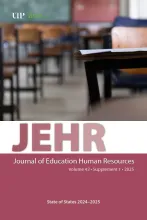Peer-Reviewed Journals
2025
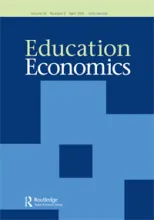
Abstract:
Several experimental studies find that high schools using College and Career Readiness School Models (CCRSM) produce positive postsecondary outcomes for students. Yet little research explores the internal mechanisms of these schools. We study teacher turnover in two CCRSMs implemented in Texas, called Early College High Schools and inclusive Science, Technology, Engineering, and Math Academies. We find (a) CCRSM schools have lower teacher turnover compared to traditional public high schools, (b) charter versions of CCRSM schools have higher turnover, but (c) non-CCRSM charters have the highest overall teacher turnover. We discuss implications for improving high school-based college readiness reforms.
Link: Download PDF
2024
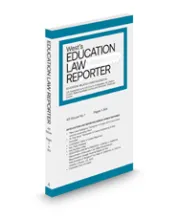
Abstract:
All fifty U.S. state constitutions include language that guarantees residents’ access to a free public education. Plaintiffs in all but two states have brought litigation challenging state school finance systems, and in over half the cases, judges ruled the systems unconstitutional and mandated state legislators to provide more equitable and adequate funding. In 2012, state supreme court judges ruled in favor of plaintiff school districts in McCleary v. Washington State. This study analyzes the policy proposals during the subsequent twelve years, from 2012 to 2024. We document actions of a series of statewide task forces that were formed as part of various state legislative reforms, and we highlight the limited extent to which task force recommendations influenced policy. Using John Kingdon’s multiple streams framework, we argue that for school finance policy recommendations to impact policy, three elements must be in place, including political will, a clearly articulated problem, and viable proposals. Major reforms were passed in Washington state once these streams aligned, but in the process the initial definition of the educational problem – one of educational finance equity – was redefined over time in ways that shifted the ultimate policy outcomes. We recommend that policymakers and advocates maintain clearly articulated messages about the theory of the educational problem and the maintain alignment about the recommendations for improving policies.
Link: Download PDF
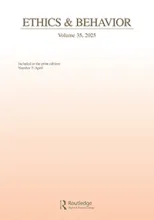
Abstract:
This manuscript explores the argument for lower student-to-school counse-
lor ratios in U.S. public education. Drawing upon a comprehensive historical
review and existing research, we establish the integral role of school coun-
selors and the notable benefits of reduced student-to-counselor ratios. Our
analysis of national data exposes marked disparities across states and dis-
tricts, with the most underfunded often serving higher percentages of low-
income students and students of color. This situation raises significant ethical
concerns, prompting a call for conscientious policy reform and targeted
investment. Informed by emerging best practices, we propose recommenda-
tions for enhancing counselor staffing and ultimately student outcomes. This
ethical argument underscores the need for proactive actions and provides
a basis for future research to further delineate the impact of school counselor
ratios on educational equity and student success.
Link: Download PDF
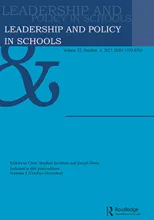
Abstract:
During the pandemic, principals played crucial roles in responding to the
exacerbated inequities that accompanied new modes of learning. Much less
understood and explored is the role played by school districts in supporting
these responses. This study seeks to understand how districts responded to
the pandemic, and the potential of these responses to promote equitable
access for marginalized students. We analyzed data from three different
American School District Panel COVID-19 surveys administered to school dis-
tricts in 2021 to provide answers to these questions. We report our findings
across three themes: ensuring equitable access through direct services, mak-
ing changes to curriculum and instructional practices, and expanding schools’
capacity to address equity. We conclude with the implications for the role of
school districts in supporting principals’ capacity to advance equity-oriented
leadership practices, leadership preparation, and future research.
Link: Download PDF
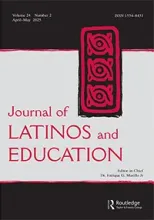
Abstract:
The superintendent is one of the most important positions within public
school districts because they have the capacity to influence policies, prac-
tices, and perceptions among school staff while simultaneously holding sway
over the public. Yet, few Latinx administrators are hired into the super-
intendency – even fewer are Latinas. Consequently, districts are never gain-
ing access to talented leaders that can help foster improved educational
experiences and outcomes for all students. In this essay, we briefly outline
the important role of the superintendent. Then, we provide a set of unique
insights on the racial and gender demographics of Texas superintendents as
well as how Latinas move through the educator workforce from principal to
superintendent. We conclude with implications to further diversify the super-
intendency and ensure Latinas are effectively mentored, supported, and
hired into district leadership positions.
Link: Download PDF
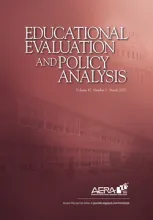
Abstract:
Knowing how policy-induced salary schedule changes affect teacher recruitment and retention will significantly advance our understanding of how resources matter for K–12 student learning. This study sheds light on this issue by estimating how legislative funding changes in Washington state in 2018–2019—induced by the McCleary court-ordered reform—affected teacher salaries and labor market outcomes. By embedding a simulated instrumental variables approach in a mixed-methods design, we observed that local collective bargaining negotiations directed new state funding allocations to substantially increase certificated base salaries, particularly for senior teachers with 16 years or more of teaching experience. Variability in political power, priorities, and interests of both districts and unions led to greater heterogeneity in teacher salary schedules. Suggestive evidence shows that state average teacher turnover rate was significantly reduced in the first year of reform. The McCleary-induced salary increase particularly reduces mid-career teachers’ (8–15 years of teaching experience) mobility rate and late-career teachers’ (23+ years of teaching experience) leaving rate. The McCleary-induced base salary increase has mostly null effects on teacher hiring in the first 2 years of implementation.
Link: Download PDF
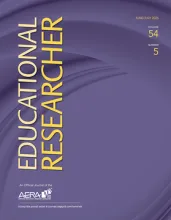
Abstract:
The superintendent is one of the most important positions within public school districts because they have the capacity to influence policies, practices, and perceptions among school staff while simultaneously holding sway over the public. Yet, few Latinx administrators are hired into the superintendency – even fewer are Latinas. Consequently, districts are never gaining access to talented leaders that can help foster improved educational experiences and outcomes for all students. In this essay, we briefly outline the important role of the superintendent. Then, we provide a set of unique insights on the racial and gender demographics of Texas superintendents as well as how Latinas move through the educator workforce from principal to superintendent. We conclude with implications to further diversify the superintendency and ensure Latinas are effectively mentored, supported, and hired into district leadership positions.
Link: Download PDF
2023
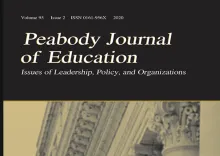
Abstract:
Recent evidence suggests school resources are continually segregated from minoritized communities. This funding disparity impacts students’ long-term outcomes in school and in their community. Political discourse has prioritized school defunding, privatization through vouchers and related policies, and tax relief and at the same time greater regulation of curriculum, content, and pedagogy in schools. Southern states in particular have moved to restrict access to a discourse of liberation and are threatening sanctions if schools implement specific content (e.g., race, and oppression). We explore the potential for school finance to create spaces that decrease democratic participation through school funding disparity. We use district-level panel data that combines National Center for Education Statistics and Census data from 2000 to 2018 to explore the patterns of school funding disparity in nine southern states; Alabama, Georgia, Kentucky, Mississippi, North Carolina, South Carolina, Tennessee, Virginia, and West Virginia. We find racial/ethnic make-up interacts with specific funding variables so that districts with higher percentages of minoritized students are at a disadvantage financially. We also find that states may over rely on local and federal funds to maintain funding levels despite increases in cost pressures.
Link: Download PDF
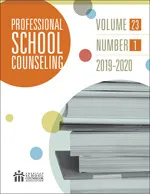
Abstract:
Although previous studies have examined the influence of school counselor ratios on student outcomes for various states, no prior studies of counselor ratios focused on schools in Texas. Utilizing data from the National Center for Education Statistics, the Stanford Education Data Archive, the U.S. Census Bureau, and the Texas Education Agency, we found that lower ratios were significantly associated with student achievement and dropout and graduation rates in Texas.
Link: Download PDF
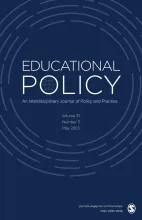
Abstract:
Drawing on data from the RAND American School Leader Panel 2020 COVID-19 Distance Learning Surveys, we analyze principal perceptions of school preparedness for distance learning with a specific focus on how different school types (e.g., rural, urban, and suburban) and student groups (e.g., students with mild disabilities, English learner students) were impacted by rapid school closure. These findings have important implications for how state education agencies, policymakers, and districts plan to address the growth of opportunity gaps among student groups. In addition, findings have important implications for education leadership and policy researchers seeking to design and implement studies to inform next generation policy and practice.
Link: Download PDF

Abstract:
Principals play a critical role in improving schools, but high rates of principal turnover threaten improvement gains. In this study we used a mixed-methods design to examine school, district, and community factors associated with greater principal turnover, and explore how these factors differ for rural schools. We found that rural districts tend to have more first year principals, fewer veteran principals, and higher rates of principal attrition in comparison to their urban and suburban peers. We found that voluntary turnover is not always attributed to school and district working conditions, but also personal and community factors specific to a principal.
Link: Download PDF

Abstract:
As the transition point between middle and high school, ninth grade can either set a student up for long-term success or diminish a student’s likelihood of graduating high school altogether. The Ninth Grade Success Initiative is a dropout prevention program, piloted in five Washington State high schools in 2019–2020. We evaluated the effects on student outcomes and found that the program led to improvements in course grades, behavioral outcomes, more effective targeting of services to higher-need students, and better preparation for the COVID-19 transition to virtual learning.
Link: Download PDF
2022

Abstract:
Studies show that historically underserved students are disproportionately assigned to less qualified and effective teachers, leading to a "teacher quality gap." Past analyses decompose this gap to determine whether inequitable access is driven by teacher and student sorting across and within schools. These sorting mechanisms have divergent policy implications related to school finance, student desegregation, teacher recruitment, and classroom assignment. I argue that analyses of the teacher quality gap that consider how teachers and students are sorted across labor markets offer additional policy guidance. Using statewide data from Texas, I show that teacher quality gaps are driven by sorting across school districts within the same labor market, but this finding differs depending on how "teacher quality" is defined.
Link: Download PDF

Abstract:
Staffing classrooms with effective teachers remains a persistent policy chal-
lenge in the U.S. Teaching positions requiringSTEM expertise are particularly
difficult to fill. Scholars have identified similar trends in other industrialized
nations. Yet, limited research examines international comparisons of the
causes and consequences of staffing challenges. We use the 2015 Trends in
Mathematics and Science Study to track teacher staffing difficulties in 27
countries. We find substantial variation across countries in the proportion of
principals reporting difficulties filling STEM positions, with U.S. schools mir-
roring international averages. We also find consistent relationships between
lower math and science achievement and attending a hard-to-staff school.
Link: Download PDF
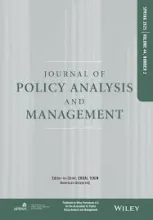
Abstract:
We evaluate the cost-effectiveness of two early childhood interventions that use instructional coaching and parent coaching as levers for improvement. The study design allows us to compare the individual effects of each intervention as well as their combined effect on student outcomes. We find that teachers receiving instructional coaching improve their use of evidence-based instructional practices, while families receiving parent coaching show increases in numerous responsive parenting behaviors associated with positive child outcomes. Both interventions demonstrate positive impacts on students, but only parent coaching shows statistically significant effects across a range of student outcomes. Instructional coaching alone is substantially less costly and may therefore be the most cost-effective of the three treatment conditions; however, small sample sizes limit our ability to reach definitive conclusions. Policy simulations suggest that implementing these interventions could raise the overall cost-effectiveness of Head Start by at least 16 percent.
Link: Download PDF
Abstract:
Student enrollment and transfer patterns between the traditional public and charter school
sectors help shape the role of charter schools in the broader educational ecosystem, especially as
related to the enrollment and segregation of low-income students, English learners, students of color,
and students in special education. We examine patterns of student transfer between traditional public
schools and charter schools among four of Texas’s largest charter networks, which cumulatively make
up over one-third of Texas charter students. We find that these schools serve fewer special education
students than traditional public schools, but a greater share of low-income and English learners.
Transfers between sectors contribute to enrollment gaps in special education and other classifications,
but the findings do not apply uniformly across charter districts, student enrollment classifications, or
grade levels. These findings highlight nuanced enrollment patterns between the charter sector and
traditional public schools, suggesting that differences in student characteristics between sectors likely
stem from a range of sources. Policymakers should acknowledge this nuance, consider alternatives to
blanket enrollment regulation policies, and conduct similar analyses of enrollment patterns among
charter districts.
Keywords: charter schools; student mobility; special education; school finance
Link: Download PDF
Abstract:
The Coronavirus Aid, Relief and Economic Security (CARES) Act passed by
Congress in 2020 included significant aid to state education systems. These
included direct aid to K-12 districts and higher education institutions, and funds
to be used at the discretion of Governors through the Governor’s Emergency
Education Relief Fund (GEER). We examine the factors influencing where and
how GEER funding was distributed across state K-12 systems and what inequities
were introduced in its spending. Using a mixed methods analysis of state GEER
spending plans and district-level finance data, we focus specifically on how
distribution sought to target schools serving disadvantaged student groups.
We find that several state leaders decided to send their GEER funds to school
districts via funding formulas, and that some Governors made decisions to
direct their GEER funds towards certain student groups. State spending patterns
were not strongly related to governor political ideology or the states’ existing
funding formulas or inter-district resource allocation patterns. We discuss the
implications of this policy related to two state case examples, California and
New York, and provide insight for future education stimulus funding proposals.
Link: Download PDF
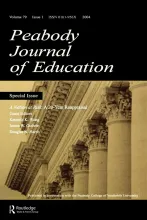
Abstract:
Federal school finance policy over the past 30 years has focused on resource allocation within school districts. Regulations require equal staffing across schools, particularly Title I schools, which are designated based on the percent of low-income students enrolled. The requirement to equalize staffing levels creates a loophole where, even with equal staffing levels, differences in staff experience and salary levels across schools lead to differences in actual spending across schools. In response, recent regulatory reforms have shifted from an emphasis on equal staffing to an emphasis on equal spending. Under the federal comprehensive support and improvement (CSI) system, states are required to periodically review within-district spending gaps for any district with a significant number of identified schools. We analyze spending gaps within districts in California and assess the extent to which the CSI system targets districts with inequitable spending patterns. We find that racial and income-based spending gaps across-schools are not substantially different for districts with CSI schools and districts with no CSI schools. Importantly, many districts with large spending gaps are not included in the policy and thus do not face federal regulations to measure and address resource disparities across schools. We discuss implications for school finance research and policy moving forward, particularly as schools respond to the global pandemic and reopening process.
Link: Download PDF
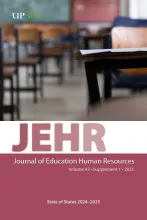
Abstract:
Current studies of school finance equity focus on quantitative approaches to understanding resource disparities. Analyses of school resources that capture stakeholder perceptions and values are better positioned to critically examine the historical, cultural, and political significance of different types of school resources. The purpose of this article is to advance a framework for analyzing school resources at the site level through a critical lens. We propose a novel conceptual framework, which we refer to as the “Critical School Level Resources” framework, to capture how local school stakeholders, specifically principals, teachers, and families, understand, allocate, and use school resources. Our hope is to see this framework push the field’s conceptualization of resources to include qualitative and critical approaches, in addition to quantitative or a-critical metrics, while incorporating more stakeholders in the evaluation of resources at their schools.
Link: Download PDF
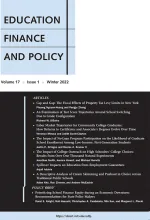
Abstract:
State budgets temporarily crashed amid the COVID-19 pandemic and economic shutdown, placing education funding at risk. To demonstrate implications for school finance, we show that (1) school districts are racially segregated along class lines; (2) higher-poverty districts receive a greater share of funds from state, as opposed to local sources, making them especially vulnerable during economic downturns; and (3) many states made across-the-board K–12 budget reductions following the Great Recession, but those cuts disproportionately impacted high-poverty districts. A decade later, state legislators may face similar fiscal challenges. Instead of enacting across-the-board cuts, states can identify specific funding programs that already benefit lower-poverty districts or wealthier students. We demonstrate how this approach would work under different state finance models and offer recommendations for state policy makers.
Link: Download PDF
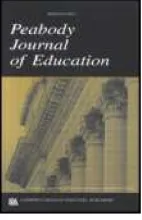
Abstract:
The last few decades have witnessed a flurry of education finance activity centered on the role of the state, focusing on issues such as resource adequacy and equity across districts. Is the state giving districts enough money to do the job of education? Does the state funding formula or the state’s reliance on local property taxes favor some districts over others?
But this Peabody Journal of Education themed issue focuses instead on the role of the district in education finance. School districts are chiefly responsible for converting tax revenues into educational expenditures at each of their schools. In that sense, this collection is about spending rather than revenues. At the risk of oversimplifying school finance, once the revenues are delivered to districts, it is then the districts that make the difficult decisions on how to spend those dollars, how much to deploy to each school, how to balance competing priorities for spending, and so on. Sure, some dollars come with strings attached, but that doesn’t negate the fact that districts then make myriad choices, from how to structure teachers’ salaries to whether to consolidate schools.
Traditionally, these within-district financial policies and choices haven’t received as much attention as state education finance policy, in part because the data were much harder to come by. But the data landscape is changing rapidly. The federal Every Student Succeeds Act (ESSA) of 2015 included a landmark provision requiring states to report school-by-school per-student spending data. Some articles in this issue (Part 1) offer a first attempt at uncovering what the data mean, particularly in the context of existing financial analyses.
How much money each school gets is, at least to some degree, a function of actions made at the district. In that sense, this examination of districts allows us to explore how funds are distributed to the unit of the school. With less research attention directed at district finance, scholars do not have a strong understanding of what factors drive school district resource allocation patterns across schools. School district budget models have been understudied and undertheorized. For example, why (and how) do some districts allocate resources more “progressively” than other districts? What staffing and budget models produce more equitable patterns of resource allocation? These questions are addressed in Part 2.
With new school-by-school finance data, researchers are better able to connect school-by-school spending decisions to the corresponding schools’ student outcomes, and begin to understand what kinds of district policies drive a more robust relationship between spending and outcomes. School districts around the country are reforming their budget and staffing models but have limited evidence from which to base these budget decisions. Would granting additional local budgetary autonomy to school principals improve student outcomes in those schools? To what extent have weighted student funding models improved productivity or closed student achievement gaps? The papers in Part 3 do just that, applying analysis of spending alongside outcomes on a school-by-school basis.
This focus on the district role in resource allocation is new. But novelty certainly is not the driver behind this issue. Better understanding of what happens to money once it reaches districts is warranted because what the district does (or does not do) has wide-reaching implications for the extent to which dollars generated at state (or federal) levels bring value to students. This spotlight on the district role in school finance isn’t temporary. If anything, it is likely to get brighter. Other federal guidance asks districts to articulate their method for allocating resources to schools and asks states to run periodic reviews of district resource allocations in the name of school improvement. And yet, the research thus far has produced little clarity to guide districts on how best to approach these decisions.
This issue of the Peabody Journal of Education is designed to address these open questions. Our hope is that this issue advances understanding of the district’s critical role and helps generate new questions for future investigation. Below, we describe the structure of this issue.
Link: Download PDF
Segregation and school funding disparities in California: Contemporary trends 50 years after Serrano
Abstract:
In this paper, we present a longitudinal analysis of the school finance system of California and assess changes that have taken place over the past 30 years.
Link: Download PDF

Abstract:
Purpose: Principals are critical to school improvement and play a vital role in creating inclusive and high-performing schools. Yet, approximately one in five principals leave their school each year, and turnover is higher in schools that serve low-income students of color. Relatedly, high rates of teacher turnover exacerbate challenges associated with unstable learning environments. Our study examines the extent to which principal turnover influences teacher turnover. We build on past work by exploring how the relationship between teacher and principal turnover differs in urban, high-poverty settings and by examining the effects of chronic principal turnover. Research Methods/Approach: We draw on a student- and employee-level statewide longitudinal dataset from Texas that includes all public K-12 schools from school years 1999-2000 to 2016-17. We estimate teacher-level models with school fixed effects, allowing us to compare teacher turnover in schools leading up to and immediately following a principal exit, to otherwise similar schools that do not experience principal turnover. Findings: Teacher turnover spikes in schools experiencing leadership turnover, and these effects are greater among high-poverty and urban schools, in schools with low average teacher experience, and in schools experiencing chronic principal turnover. Implications: Improving leadership stability, especially in urban schools experiencing chronic principal turnover may be an effective approach to reducing teacher turnover. Principal and teacher turnover and their relationship with each other requires further investigation. The field would benefit from qualitative research that can provide important insights into the individual decisions and organizational processes that contribute to principal turnover.
Link: Download PDF
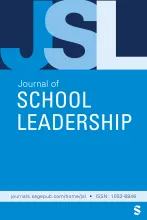
Abstract:
Schools devote substantial resources to teacher professional development each year. Yet studies show much of this investment is directed toward ineffective short-term workshops that have little impact on instructional change or student outcomes. At the same time, more intensive job-embedded forms of professional learning, such as instructional coaching, require substantially more resources than traditional professional development. We report the results of a two-year study assessing the cost-effectiveness of instructional coaching through a design-based, continuous improvement research model. We study iterative, inquiry cycles in which educators collect data and make changes to the coaching model based on multiple rounds of implementation. We determined the effectiveness of coaching during each iteration by tracking the number of times teachers and coaches reached student-outcome based goals set during the coaching cycle. We assess the cost of implementing the coaching model for each of the three iterations by monitoring staff time allocations and other resource use. Results show that across five schools, the cost of the coaching intervention decreased substantially from the first iteration to the second iteration but increased moderately during the third iteration. Our findings suggest that coaching programs can become more cost-effective over time, as coaches and teachers refine their work together. While specific design features of the study limit generalizability of our findings, the study demonstrates how improvement science or design-based research can be combined with cost-effectiveness research to improve practice in local settings.
Link: Download PDF
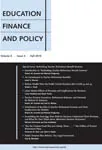
Abstract:
Early colleges (ECs) provide high school students access to college coursework with the goal of increasing postsecondary opportunities for traditionally underrepresented students. We examine the impact of ECs on postsecondary attainment, calculate the resulting monetary benefits, and then estimate the per-student costs of ECs compared with traditional high schools to assess costs and benefits. Our findings indicate that students enrolling in ECs in our study are more likely to attend college and graduate with an associate's or bachelor's degree. Increased educational attainment from EC enrollment results in lifetime benefits of almost $58,000 per student. ECs cost approximately $950 more than traditional high schools per student per year, resulting in an overall cost of $3,800 more per student across four years of high school. Comparing benefits to cost, we estimate a net present value (NPV) of $54,000 per student and a benefit–cost ratio of 15.1. Even when using conservative estimates of costs (upper bound) and benefits (lower bound), we calculate an NPV of over $27,000 and a benefit–cost ratio of 4.6. These results indicate that investment in ECs pays off through increased earnings for EC students, increased tax revenue, and decreased government spending.
Link: Download PDF

Abstract:
Principals are critical to improving schools, but job-related stress and burnout are factors that can limit principal effectiveness and lead to untimely turnover. Extant literature, leadership preparation programs, and district policies have largely ignored principal burnout despite the increased complexity of the principalship and increasing rates of turnover. The COVID-19 pandemic has exacerbated principal burnout given the added demands and transitions associated with school closures, reopening, and social distancing protocols. The purpose of this article is to provide a set of recommendations for district administrators and school leaders in order to reduce burnout. We hope these recommendations provide an initial starting point for taking action to reduce principal burnout.
Link: Download PDF

